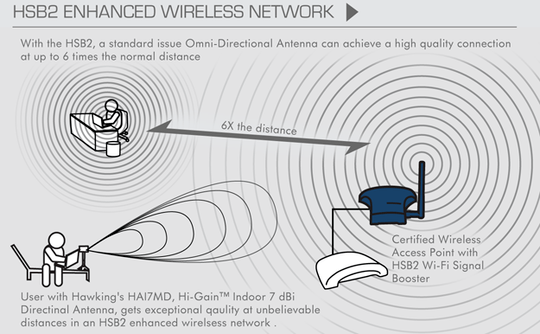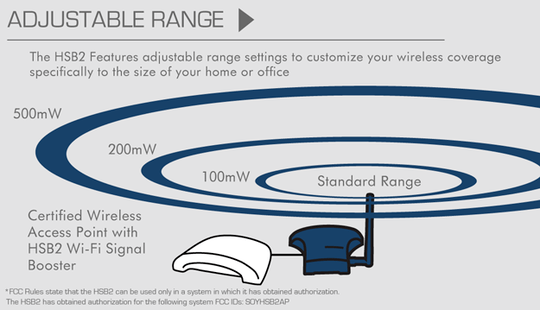Just on the link you pointed there is a "How it works" link.


If the booster is connected to the same antenna as before, how could
the received signal be better?
It boosts the signal that feeds the antenna, I mean, instead of going 10 power unit(just exampling, it is actually messed on miliWatts or dbm) to the antena, the amplifier now boosts it to 20 power unit. This means that the antena now is irradiating the double of the signal is was irradiating before(in this case 3dB up).
Also, according to this reference:
A cellular repeater, cell phone repeater, or wireless cellular signal
booster, a type of bi-directional amplifier (BDA) as commonly named in
the wireless telecommunications industry, is a device used for
boosting the cell phone reception to the local area by the usage of a
reception antenna, a signal amplifier and an internal rebroadcast
antenna. These are similar to the cellular broadcast towers used for
broadcasting by the network providers, but are much smaller, usually
intended for use in one building. Modern cellular repeater amplifiers
rebroadcast cellular signals inside the building. The systems usually
use an external, directional antenna to collect the best cellular
signal, which is then transmitted to an amplifier unit which amplifies
the signal, and retransmits it locally, providing significantly
improved signal strength. The more advanced models often also allow
multiple cell phones to use the same repeater at the same time, so are
suitable for commercial as well as home use.
Also, something about technical theory about amplifiers:
All models will include a signal amplifier. Even the cheaper home-use
models (typically band selective) now provide 20dB - 50dB gain and
many of the more expensive models provide over 50dB. Excellent
high-power models (not home usage - smart and expensive technology of
the operators) offering gain around 100dBm (ICE function is welcomed
as an improvement of the radio isolation between donor and service
antenna). However, since the decibel scale is measured on a
logarithmic scale a 30dB gain represents a one thousandfold signal
power increase - meaning the total amplification of a repeater with
greater than around 50dB is likely to be useless without a good, well
aligned antenna. This is due to the difficulty of filtering the
correct signal out from the background noise, which will be amplified
equally, and the limiting maximum signal power of the amplifier (for
picorepeaters typically from around 5 dBm (3.2 mW)). Standard GSM
channel selective repeater (operated by telecommunication operators
for coverage of large areas and big buildings) has output power around
2W, high power repeaters (e.g., NodeG from Andrew) offering output
power around 10W). The power gain is calculated by the following
equation:




All these amplifiers do is amplify the original signal. That of course is a very simple explaination of what they actually do. Basically instead of your WiFi router getting the signal this device will recieve it then broadcast its own signal. – Ramhound – 2012-06-14T11:49:26.580
@Ramhound my English is pretty bad but I could have figured that from their name. So the only difference is that the computer sees a higher signal power? Isn’t that completely useless? I thought the power of the signal was just a way to judge its quality (i.e. average number of errors) : if the quality is still poor then what is it good for? – qdii – 2012-06-14T11:53:29.927
@Ramhound Wait, I’m afraid you are mistaken. The device I was talking about is not a repeater. I mean, it connects between the computer and the computer’s antenna. – qdii – 2012-06-14T11:54:24.310